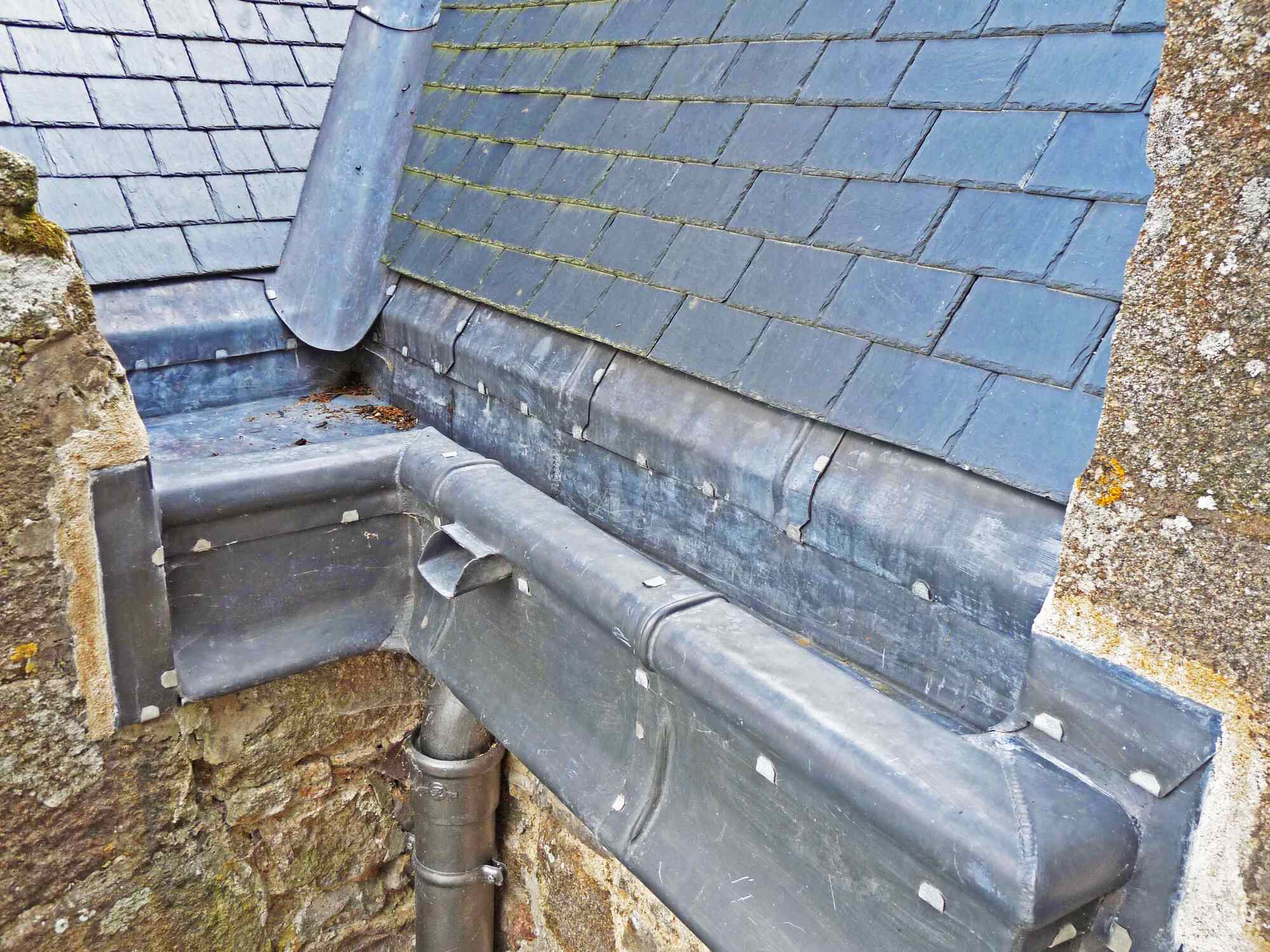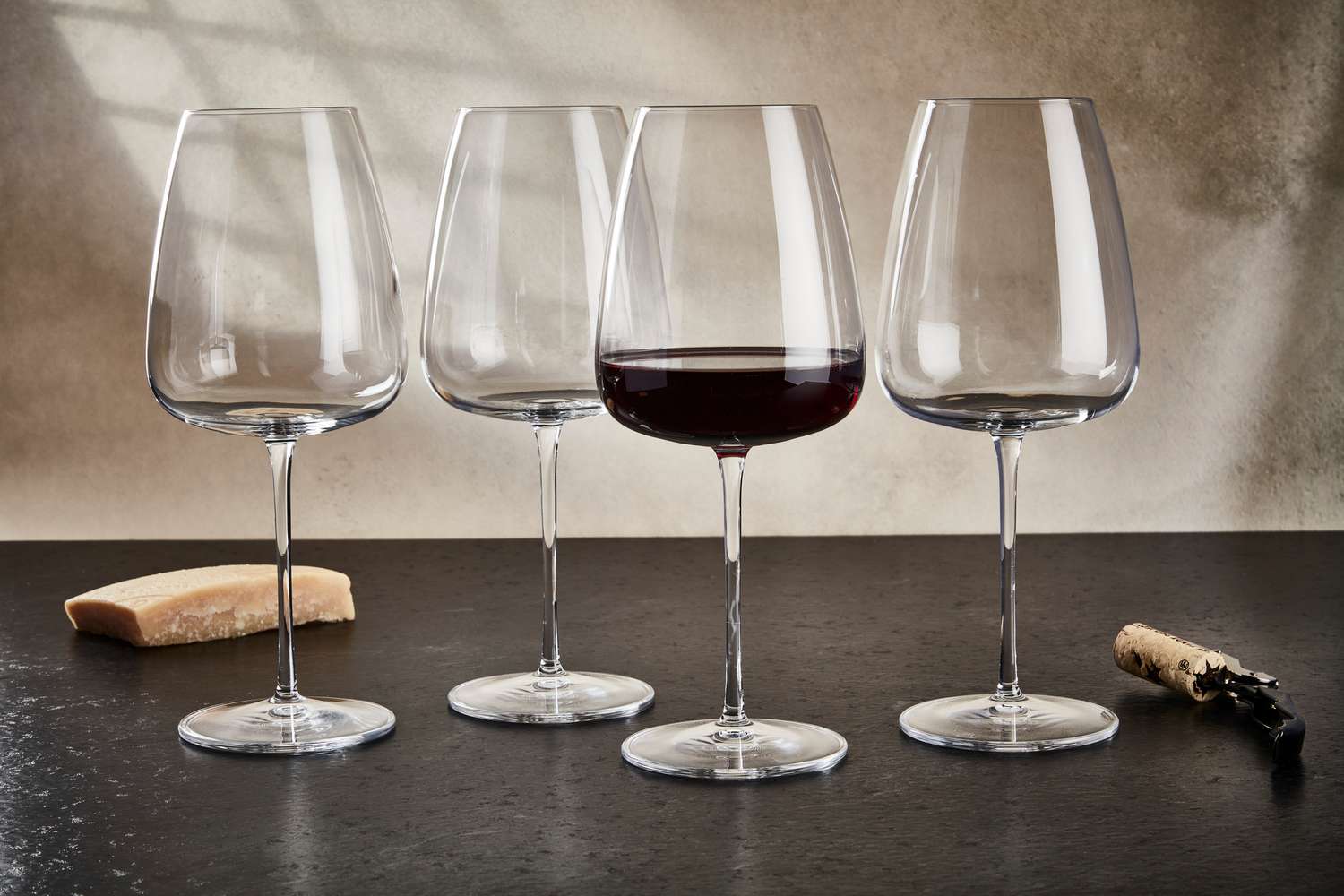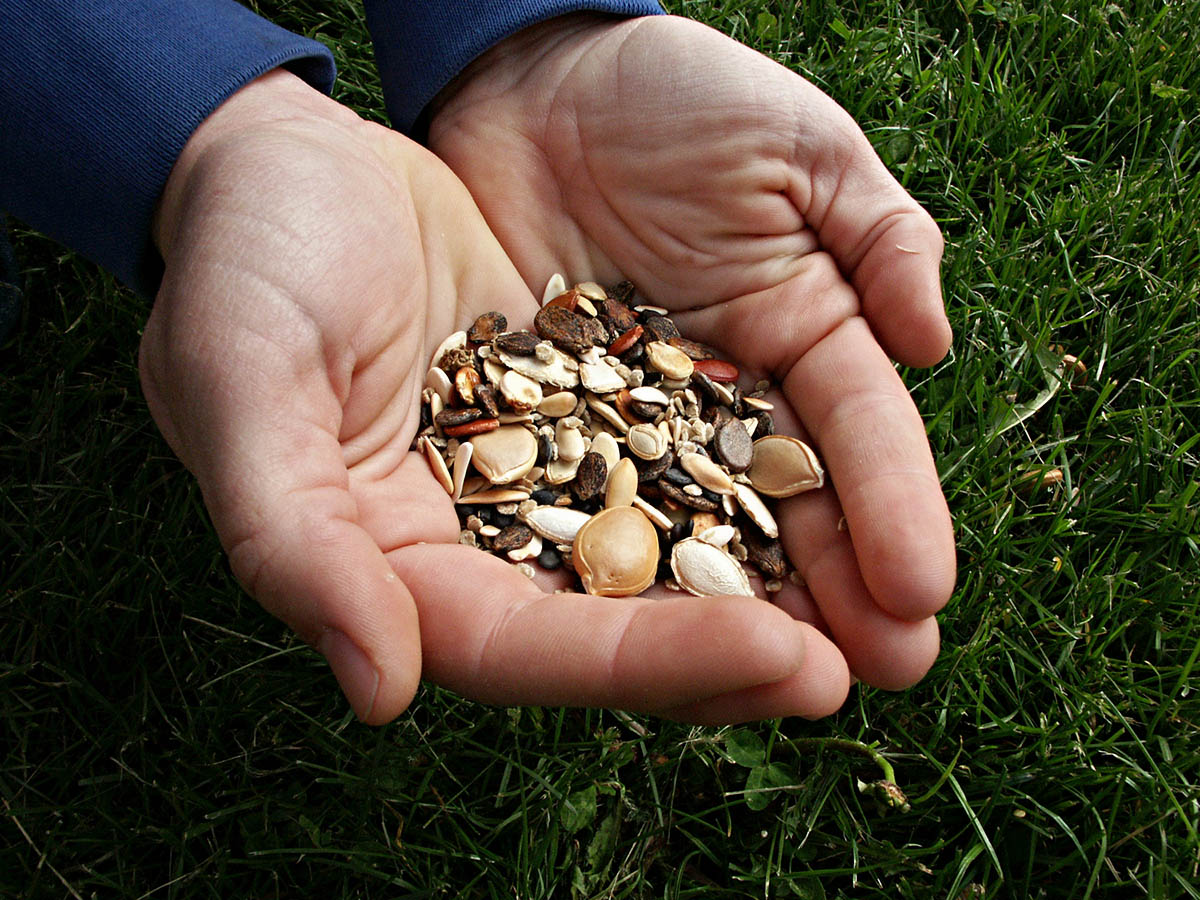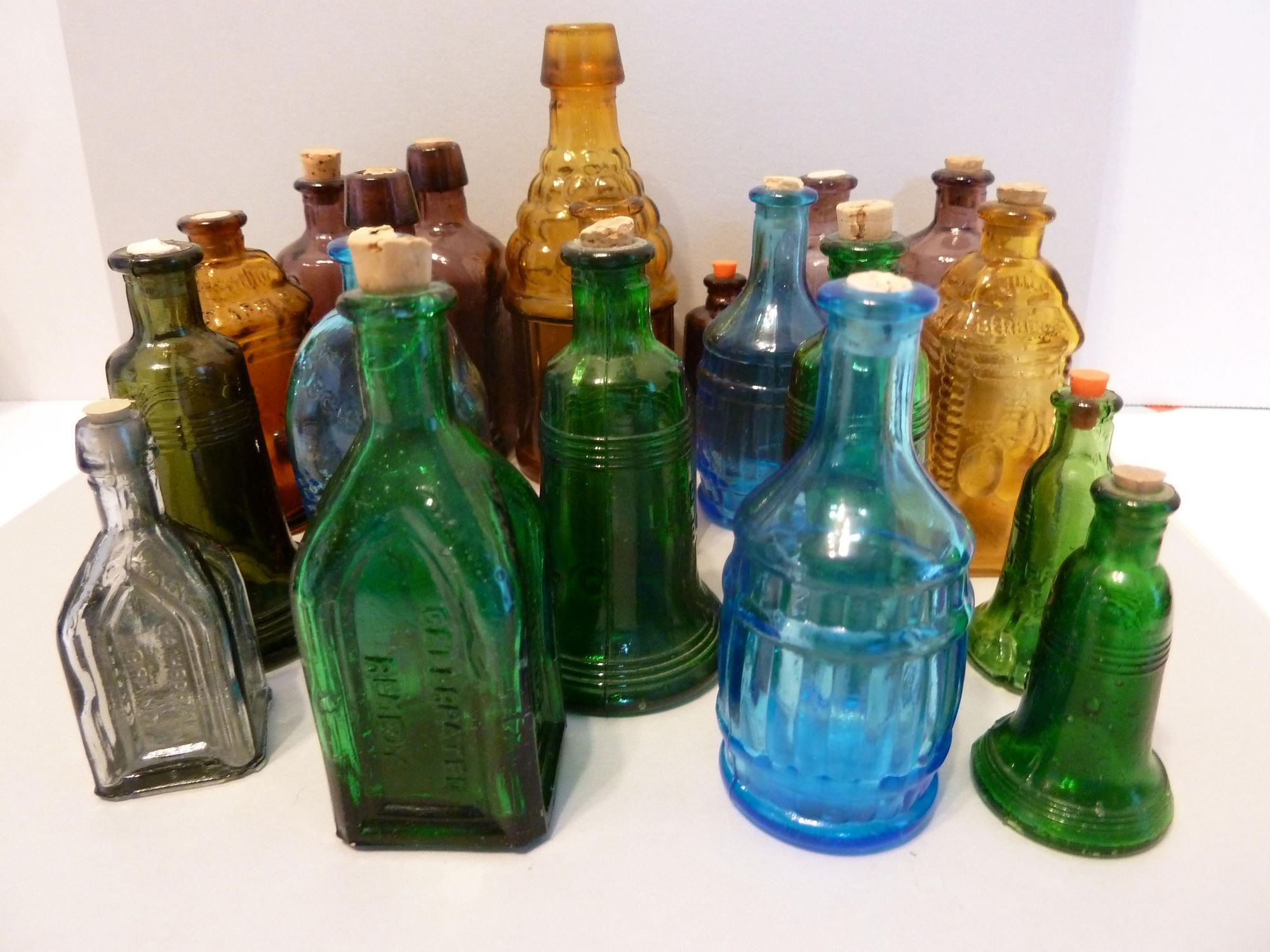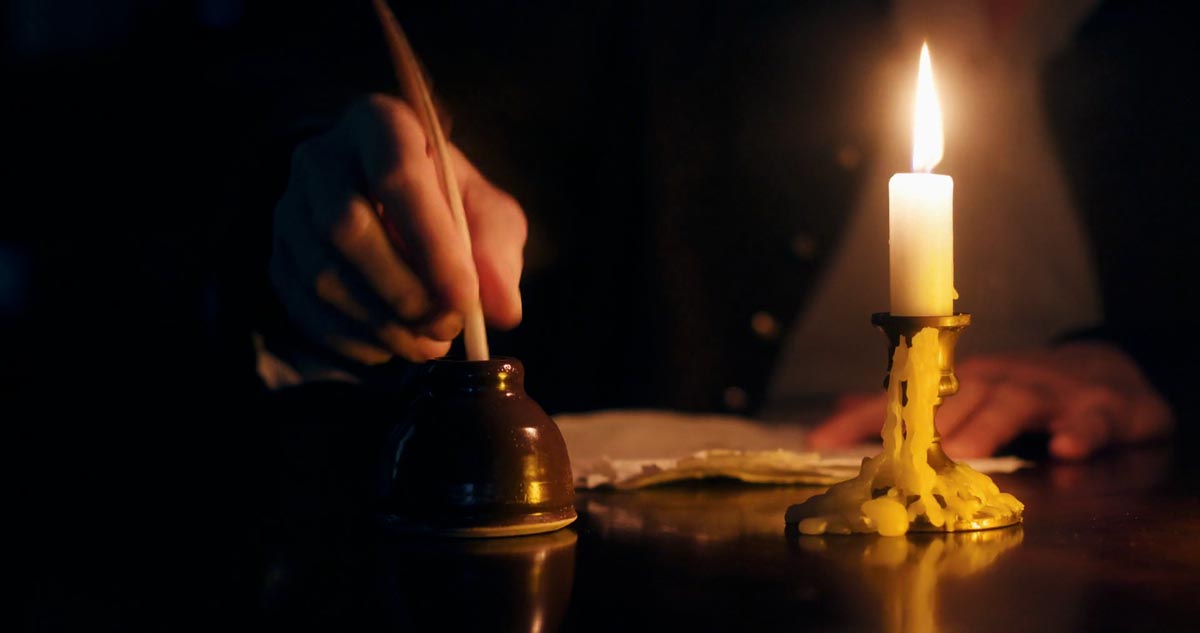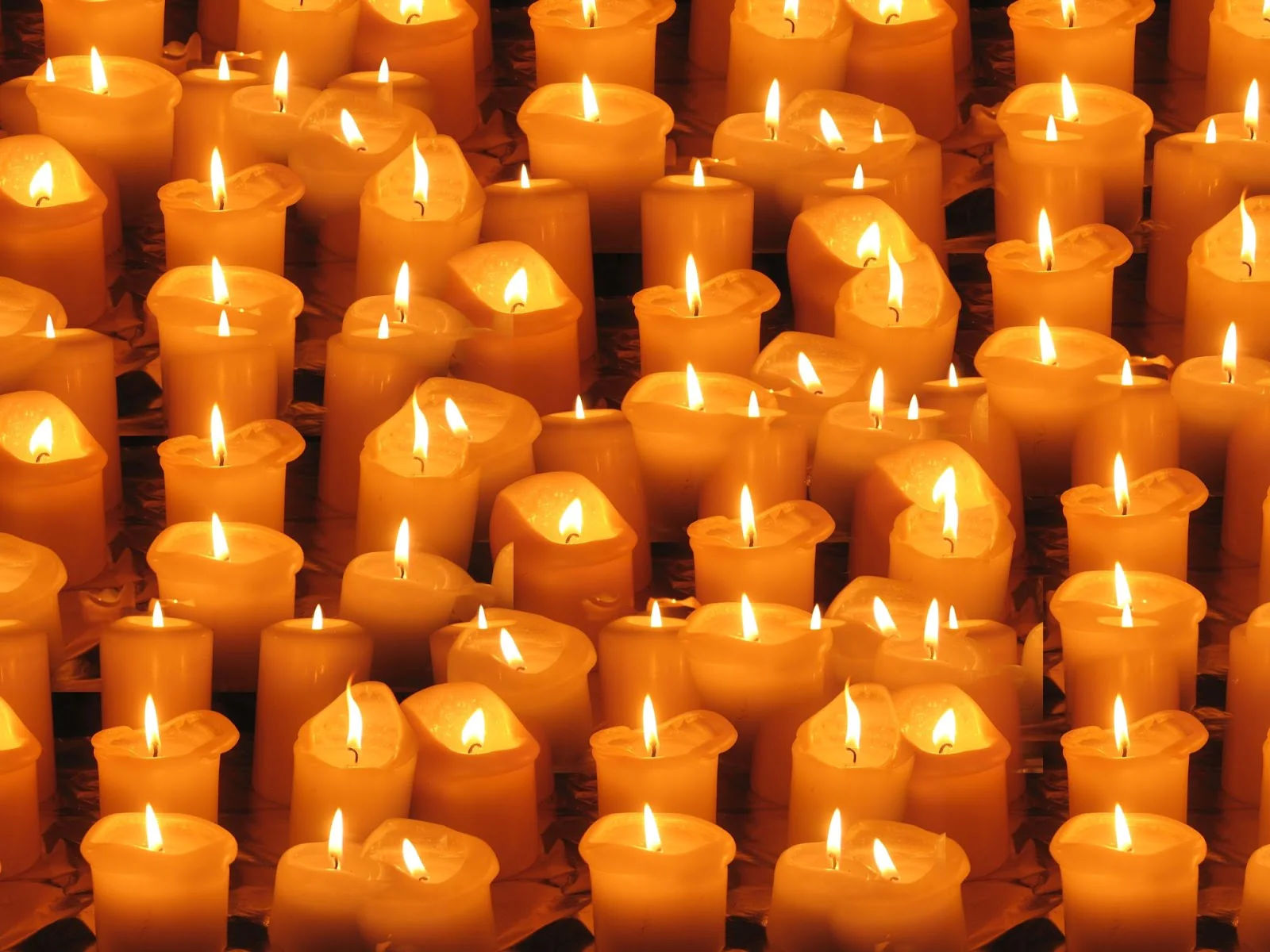

Articles
How Were Candles Invented
Modified: February 23, 2024
Discover the fascinating history of candle making in our articles. Learn about the origin and evolution of candles throughout the ages.
(Many of the links in this article redirect to a specific reviewed product. Your purchase of these products through affiliate links helps to generate commission for Storables.com, at no extra cost. Learn more)
Introduction
Exploring the history of candles is like taking a journey back in time, where humankind’s ingenuity and resourcefulness shine through. For centuries, candles have played a vital role in providing light, heat, and even religious symbolism. The invention and evolution of candles have been fascinating, shaped by the needs and advancements of various civilizations throughout history.
From the early origins of candle making to the sophisticated techniques used in modern times, the story of candles is truly remarkable. This article will delve into the intriguing history of candles, tracing their development from ancient civilizations to the present day.
Join us on this illuminating journey as we delve into the origins of candles, the materials used, the techniques employed, and the pivotal role they continue to play in our lives.
Key Takeaways:
- The Evolution of Candle Making
From ancient civilizations to modern techniques, the history of candle making showcases human ingenuity and innovation, leading to the creation of stunning and high-quality candles that cater to diverse consumer preferences. - Symbolism and Practicality of Candles
Candles have transcended their practical purpose to become symbols of enlightenment, warmth, and ambiance, reflecting a rich history and artistry that brightens our world.
Read more: When Were Rugs Invented
Early Origins of Candle Making
The origins of candle making can be traced back thousands of years to ancient times when early civilizations sought solutions to illuminate their surroundings after dark. The earliest evidence of candle use dates back to the ancient Egyptians, who created torches by soaking reeds in animal fat. These early torches provided a rudimentary source of light, albeit one that produced a pungent smell and emitted a smoky flame.
In ancient Rome, the use of candles was expanded upon with the introduction of rushlights. These crude candles were made by soaking the pithy core of a rush plant in melted animal fat, allowing the wick to absorb the fuel and burn slowly. While these candles were an improvement over their predecessors, they still produced a significant amount of smoke and had a limited burn time.
As civilization evolved, so too did the techniques and materials used in candle making. The ancient Chinese are credited with inventing molded candles made from whale fat during the Qin Dynasty (221-206 BC). These candles were created by pouring molten fat into molds made of clay or bronze, resulting in sturdy and long-burning candles.
During the Middle Ages, the process of candle making became more refined. European candle makers began using beeswax obtained from beehives, which burned cleaner and emitted a pleasant scent. Beeswax candles were highly valued and initially reserved for religious ceremonies and important events.
The development of candle making techniques continued to progress, with the introduction of bayberry wax candles in colonial America. Bayberry wax, derived from the berries of the bayberry shrub, produced candles with a delicate aroma and a beautiful greenish hue. However, extracting enough wax from bayberries was labor-intensive, making these candles a luxury item.
While the early origins of candle making involved natural materials such as animal fat and beeswax, advancements in technology and the discovery of new materials would soon revolutionize the candle industry. The next section will explore the emergence of beeswax candles and their significance in ancient civilizations.
Ancient Civilizations and the Development of Candles
Ancient civilizations played a crucial role in the development and refinement of candle making techniques. From Egypt to Greece and Rome, the use of candles became more prevalent and sophisticated.
In ancient Egypt, candles were not only a practical source of light but also held a sacred significance. The Egyptians believed that light and fire were powerful forces that could ward off evil spirits and provide guidance in the afterlife. They used cylindrical molds made of stone or clay to create their candles, often using tallow or animal fat as the fuel source. The wicks were made from materials like reeds or fibrous plant stems.
The Greeks also embraced candle making, utilizing olive oil as a fuel source. They developed a variety of candle designs, including the use of multiple wicks to enhance the amount of light produced. The Greeks also valued the aesthetic qualities of candles, often adorning them with decorative motifs and shapes.
In ancient Rome, candles took on a practical role, illuminating homes, streets, and public spaces. The Romans introduced the concept of dipped candles, where wicks were repeatedly dipped into melted tallow or beeswax, building up layers to create a longer burning candle. This technique allowed for greater control over the size and shape of the candle, resulting in more efficient and versatile lighting sources.
One notable development during this time was the introduction of “candelabra,” or candlesticks. These elegant and ornate holders were designed to hold multiple candles, providing a more abundant and dramatic source of light. Candelabra became a status symbol, used in palaces, temples, and wealthy households.
While the ancient civilizations laid the groundwork for candle making, it would be in the Middle Ages that candles would take on even greater importance. The next section will explore the role of candles during this period and the advancements that shaped their use.
The Emergence of Beeswax Candles
As the Middle Ages dawned, a significant shift occurred in the candle-making industry. The emergence of beeswax candles marked a transformative period in candle production, as it introduced a cleaner and more desirable light source.
Beeswax candles became highly sought after due to their distinct advantages over other types of fuel. Beeswax, sourced from beehives, burned more cleanly and produced a brighter and more pleasant light compared to tallow or animal fat candles. These candles also emitted a subtle and sweet aroma that added to their appeal.
The use of beeswax candles gained prominence in religious ceremonies and important events. Churches and monasteries were the primary consumers of beeswax candles, as they believed that the purity of the light represented the divine presence and spirituality. The exquisite craftsmanship and intricate designs of beeswax candles reflected the solemnity and grandeur of religious rituals.
Due to the scarcity of beeswax and the labor-intensive process required to produce it, beeswax candles were considered a luxury item. They were expensive and predominantly reserved for the affluent class and religious institutions.
However, the popularity of beeswax candles eventually led to the establishment of wax chandlers’ guilds. These guilds regulated the production, quality, and pricing of beeswax candles, ensuring that they maintained a certain level of excellence. The guilds also provided training and apprenticeships for aspiring candle makers, further elevating the artistry and craftsmanship of beeswax candle production.
While beeswax candles continued to dominate the higher end of the market, tallow candles remained widely used by the general population. Tallow, derived from animal fat, was a more accessible and affordable fuel source. However, tallow candles gave off a foul smell and emitted a dark, smoky flame, making them less desirable compared to beeswax candles.
The emergence of beeswax candles in the Middle Ages marked a turning point in the candle-making industry. Their superior qualities and symbolic significance in religious ceremonies propelled their popularity and laid the foundation for the advancements that would come in subsequent centuries.
Candle Making in the Middle Ages
During the Middle Ages, candle making played a crucial role in providing illumination and warmth in a time when reliable sources of light were scarce. Candle making techniques continued to evolve, and new materials and methods were introduced, shaping the candle industry during this period.
One of the notable advancements during the Middle Ages was the improvement in the quality and availability of tallow candles. Tallow, derived from animal fat, remained the most commonly used fuel source for candles. However, candle makers began to refine the process of rendering tallow, resulting in candles that burned more efficiently and emitted less smoke and unpleasant odors.
The method of creating tallow candles involved melting animal fat and pouring it into molds or dipping wicks into the melted tallow. These candles were relatively inexpensive to produce and were widely used by the lower classes. Tallow candles became a staple in households and provided a much-needed source of light for daily activities.
As the demand for candles grew, so did the candle-making industry. Candle makers, known as chandlers, became skilled artisans and contributed to the local economy. The chandlers established guilds that regulated the trade, ensuring quality standards were met and preventing fraud or substandard practices.
During this period, the production of candles also expanded to include a wider variety of shapes and sizes. Candle makers crafted spherical candles, cylindrical candles, and even multi-wick candles for enhanced lighting. The design and shape of the candles were not purely functional; they also served as decorative pieces, adding a touch of elegance to homes and ceremonies.
The Middle Ages also witnessed the emergence of candlemakers who specialized in the production of scented candles. These candles were infused with various fragrances, such as herbs, flowers, and spices, to provide a pleasant aroma while they burned. Scented candles were particularly popular among the upper classes and were often used during lavish banquets and important social gatherings.
Overall, candle making in the Middle Ages expanded in scope and sophistication. The advancements in tallow candles, the variety of candle shapes, and the introduction of scented candles all contributed to the growing popularity and importance of candles in daily life.
Read more: When Were Curtains Invented
The Advent of Tallow Candles
During the Late Middle Ages and into the Renaissance period, tallow candles reigned supreme as the most widely used type of candles. Tallow, derived from animal fat, provided an accessible and cost-effective fuel source that fueled the growing demand for illumination.
Tallow candles were relatively simple to produce. Candle makers would collect and render animal fats, typically from cows or sheep. The fat was heated and filtered to remove impurities, and then mixed with additives such as beeswax or stearin to improve the burning qualities of the candle.
Once the tallow mixture was ready, the candle makers would pour it into molds or dip the wicks into the liquid tallow repeatedly to build up layers. The dipped candles were then left to cool and solidify, resulting in sturdy and long-lasting candles.
The appeal of tallow candles lay in their affordability and availability. Animal fats were abundant, especially in agricultural communities where farming and animal husbandry were prevalent. This made tallow candles accessible to the wider population, including the lower classes.
However, tallow candles had their drawbacks. They emitted a pungent odor when burned and produced a dark, smoky flame. The quality of light they provided was relatively poor compared to more expensive alternatives like beeswax candles. Nevertheless, tallow candles remained the primary source of lighting for the majority of people during this time.
The production of tallow candles was not limited to professional chandlers. Many households would make their own candles as a part of their domestic tasks. Women, in particular, played a significant role in candle making, as it was considered a valuable skill in managing a household.
Despite the introduction of other candle materials and advancements in lighting technology, tallow candles continued to be widely used well into the 18th century. It was not until the Industrial Revolution that alternative materials and production methods began to challenge the dominance of tallow candles.
The advent of tallow candles marked an important stage in the evolution of candle making, providing an affordable and accessible source of light that supported the daily activities of countless individuals and communities.
The earliest known candles were made from tallow or beeswax by the ancient Egyptians and Romans. They were used for light and rituals.
The Role of the Candle in Enlightenment Europe
In Enlightenment Europe, candles took on a new significance as they played a vital role in the intellectual, social, and cultural movements of the time. The Age of Enlightenment was marked by a pursuit of knowledge, reason, and scientific progress, and candles became symbolic of the Enlightenment ideals that illuminated societies.
Candles were essential in the private spaces where scholars and thinkers engaged in intellectual pursuits. Candlelight provided the necessary illumination for reading, studying, and writing, allowing Enlightenment philosophers and scientists to delve into their research and share their ideas with the world.
Enlightenment salons, gatherings hosted by influential and intellectual figures, became important venues for the exchange of ideas and discussions. These salons were often held in dimly lit rooms, illuminated by clusters of candles, creating an atmosphere conducive to thoughtful and spirited debates.
Candles also played a role in the public sphere. They were used to illuminate lecture halls, theaters, and libraries, fostering an environment that encouraged the dissemination of knowledge and the enlightenment of the masses.
Enlightenment thinkers considered candles as symbols of enlightenment and progress. The concept of “lighting the way” became a metaphor for spreading knowledge, reason, and freedom. Candles were seen as the embodiment of reason and the eradication of ignorance, igniting the minds of individuals and society as a whole.
During this period, the candle-making industry underwent significant advancements. Innovations in candle manufacturing techniques and the introduction of new materials, such as stearin and spermaceti, improved the quality and performance of candles. These materials produced cleaner-burning candles with less smoke and longer burn times, providing a more reliable and efficient source of light.
The Enlightenment era also witnessed the rise of luxury candles, adorned with decorative elements and crafted from high-quality materials like beeswax or costly imported tallow. These candles were symbols of wealth and status, used during elaborate social events and ceremonies.
While the Enlightenment eventually gave way to new forms of lighting, such as gas lamps and electric lights, the legacy and symbolism of candles as a force of enlightenment continue to resonate. The role of candles in Enlightenment Europe remains a testament to their enduring cultural, intellectual, and historical significance.
The Industrial Revolution and Candle Manufacturing
The Industrial Revolution in the 18th and 19th centuries had a profound impact on candle manufacturing, transforming the industry and revolutionizing the way candles were produced and distributed.
Prior to the Industrial Revolution, candle making was predominantly a manual and time-consuming process carried out by skilled chandlers. However, with the advent of new technologies and the mechanization of various industries, the manufacturing of candles underwent significant changes.
The introduction of steam power and new machinery enabled the mass production of candles on a larger scale. Candle factories were established, equipped with specialized equipment such as candle molds, dipping machines, and wick-spinning devices. These innovations improved efficiency, reduced labor costs, and increased production rates.
With the Industrial Revolution came advancements in material science, leading to the development of new candle materials. Stearin, derived from animal or vegetable fats, was widely used as a key ingredient in candle production. Stearin-based candles burned more cleanly and produced a steadier flame compared to traditional tallow or beeswax candles.
During this era, the production of candles expanded to include a wide range of shapes, sizes, and colors. Candles became more accessible to a larger segment of society, as improvements in transportation and distribution networks made them more widely available.
Additionally, the Industrial Revolution brought about changes in the workforce and working conditions. As candle making became more mechanized, the demand for skilled chandlers diminished, resulting in a shift towards factory-based production and employment of unskilled workers.
The increased production and availability of affordable candles had significant societal impacts. Candles became more affordable for the average person, allowing them to enjoy the benefits of artificial lighting in their homes and workplaces. This improved the quality of life, extended working hours, and contributed to the overall development of industries and economies.
However, despite the advancements in candle manufacturing during the Industrial Revolution, there were still challenges to overcome. Candles were primarily made from animal fats, which often resulted in an unpleasant odor when burned. As the demand for cleaner-burning candles grew, further innovations were needed to overcome these shortcomings.
The candle industry continued to evolve and adapt with subsequent technological advancements, eventually giving rise to the introduction of paraffin wax and other petroleum-based materials in the 19th century. These materials revolutionized the candle industry once again, offering cleaner-burning candles with longer burn times and greater versatility.
The Industrial Revolution marked a momentous turning point in candle manufacturing, transforming it from a labor-intensive craft into a mechanized and efficient industry. The innovations and advancements of this period laid the groundwork for the modern candle-making techniques we see today.
The Evolution of Candle Wick Materials
Throughout the history of candle making, the material used for the wick has played a crucial role in the performance and quality of the candle. The evolution of candle wick materials has been driven by the need for better burning efficiency, reduced smoke, and improved overall candle experience.
In the early stages of candle making, wicks were typically made from natural fibers such as reeds, rushes, or twisted cotton. These materials provided a means for the fuel to be drawn up to the flame, allowing the candle to burn. However, natural fiber wicks had limitations, such as poor combustion, inconsistent burning, and excessive smoke.
As candle making techniques advanced, the search for better wick materials began. One of the significant developments was the introduction of plaited or braided cotton wicks. This innovation improved the consistency and performance of candles, allowing for a steadier flame and more controlled burning. Cotton wicks became the standard choice for candle makers, known for their reliability and clean burning.
With the rise of the Industrial Revolution and the availability of new materials, innovation in wick manufacturing continued. The introduction of metal core wicks revolutionized the candle industry. These wicks featured a metal wire or core, which enhanced stability, reduced soot, and improved the overall burn quality of the candle. Metal core wicks were especially popular for container candles and scented candles, where a consistent burn and minimal smoke were essential.
Another significant development in wick materials was the use of paper or cellulose wicks. Paper wicks were designed to provide a cleaner and more consistent burn, with less carbon buildup and reduced smoke. They offered an economical alternative to traditional cotton wicks and gained popularity among candle makers.
In recent years, there has been a growing interest in eco-friendly and sustainable candle options. As a result, wick materials such as hemp, flax, and other natural fibers have gained traction. These natural fiber wicks offer a renewable and biodegradable alternative to synthetic materials, aligning with the increasing consumer demand for environmentally conscious products.
Alongside traditional wick materials, innovative manufacturing techniques have also contributed to the evolution of candle wicks. Wick braiding technology allows for the creation of specially designed wicks, such as self-trimming wicks or wicks that promote a more even burn. These advancements ensure a better candle experience for consumers, with improved burning properties and reduced maintenance.
Furthermore, the type of wax used in candles can also influence the choice of wick material. Different waxes have different burning characteristics, and choosing the appropriate wick helps optimize the burn quality. For example, soy wax candles may benefit from a different wick material compared to beeswax or paraffin wax candles.
The evolution of candle wick materials has been essential in enhancing the performance, efficiency, and overall experience of candles. From natural fibers to metal core wicks, and the rise of eco-friendly alternatives, the exploration and innovation in wick materials continue to shape the candle making industry.
Read more: Why Were Tablecloths Invented
Modern Candle Making Techniques
In today’s world, candle making has evolved into a sophisticated craft that combines traditional methods with modern techniques. From the selection of high-quality materials to innovative pouring and fragrance blending processes, modern candle making techniques have expanded the possibilities for creating beautiful and unique candles.
One of the key advancements in modern candle making is the use of advanced wax formulations. While traditional materials such as beeswax and tallow are still used, there are now a variety of other waxes available, such as soy wax, palm wax, and paraffin wax. Each type of wax offers different characteristics and properties, allowing candle makers to choose the best option for their desired outcomes.
Beyond wax selection, modern candle makers have access to a wide range of colorants and dyes to add vibrant hues and visual appeal to their creations. Liquid dyes, color blocks, and even natural pigments are used to create an array of stunning and customizable candle colors.
The process of pouring has also been transformed through the use of specialized equipment and techniques. Many candle makers now utilize professional-grade melting tanks, allowing for precise temperature control and uniform melting. This ensures a smooth and consistent pour, resulting in beautifully finished candles.
Another area where modern techniques have made a significant impact is in fragrance blending. Candle makers can now choose from an extensive selection of high-quality fragrance oils or essential oils to create captivating scents. Utilizing professional scent blending tools, they can carefully combine different fragrance notes to achieve unique and compelling aromas.
Candle makers also experiment with various container styles and shapes. From classic glass jars to trendy tin containers or decorative ceramic vessels, the choice of containers adds to the aesthetic appeal of the final product. Additionally, the availability of specialized wicks allows candle makers to optimize burn performance, ensuring a clean and even wax consumption throughout the candle’s lifespan.
Furthermore, the use of technology has revolutionized the candle making industry. Digital platforms and software assist in inventory management, order processing, and marketing. Online marketplaces have made it easier for candle makers to reach a broader audience and showcase their products to customers around the world. Social media platforms play a crucial role in brand promotion and customer engagement.
Sustainability and eco-friendliness have also become significant considerations in modern candle making. Many candle makers now offer natural and renewable wax options, biodegradable packaging, and seek out sustainable sourcing of ingredients. This focus on creating eco-conscious candles aligns with the growing consumer demand for environmentally friendly products.
Overall, modern candle making techniques combine traditional craftsmanship with innovative approaches. From advanced wax formulations and fragrance blending to precise pouring methods and digitally-driven marketing strategies, these techniques allow candle makers to create stunning and high-quality products that cater to the diverse preferences of today’s consumers.
Conclusion
The history of candle making is a testament to the ingenuity and resourcefulness of humankind. From the early origins of using animal fats and reeds to the sophisticated techniques and materials available today, the evolution of candles is a captivating journey through time.
Early civilizations sought ways to illuminate their surroundings after dark, leading to the invention of torches, rushlights, and the first molded candles made from waxes like beeswax. As time passed, the candle making craft expanded, with the Middle Ages witnessing the emergence of beeswax candles and their significance in religious ceremonies.
The advent of the Industrial Revolution brought about significant changes, as candle manufacturing became mechanized, and new materials such as stearin and spermaceti were employed. The role of candles extended beyond practicality, becoming a symbol of enlightenment and progress during the Enlightenment era in Europe.
Throughout the centuries, candle wick materials evolved, transitioning from natural fibers like reeds and rushes to the introduction of plaited cotton wicks. Metal core wicks improved burning efficiency, and paper wicks offered cleaner burning. Today, modern candle making techniques allow for the use of natural fibers, advanced wax formulations, and precise pouring and fragrance blending processes.
The candle making industry continues to innovate and adapt to meet the demands of consumers. Eco-friendly and sustainable practices have gained prominence, as candle makers strive to create environmentally conscious products.
In conclusion, candles have come a long way from their humble beginnings, transcending their practical purpose to become a symbol of enlightenment, warmth, and ambiance. From ancient civilizations seeking light in the darkness to modern candle makers utilizing advanced techniques and sustainable practices, candles remain an enduring and beloved part of our lives.
As we illuminate our homes, celebrate special occasions, or simply enjoy a moment of tranquility, let us appreciate the rich history and artistry behind the candles that brighten our world.
Frequently Asked Questions about How Were Candles Invented
Was this page helpful?
At Storables.com, we guarantee accurate and reliable information. Our content, validated by Expert Board Contributors, is crafted following stringent Editorial Policies. We're committed to providing you with well-researched, expert-backed insights for all your informational needs.
